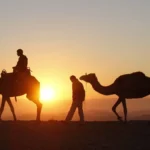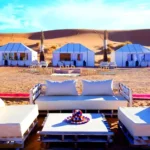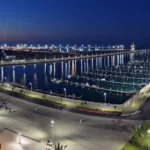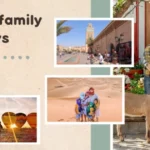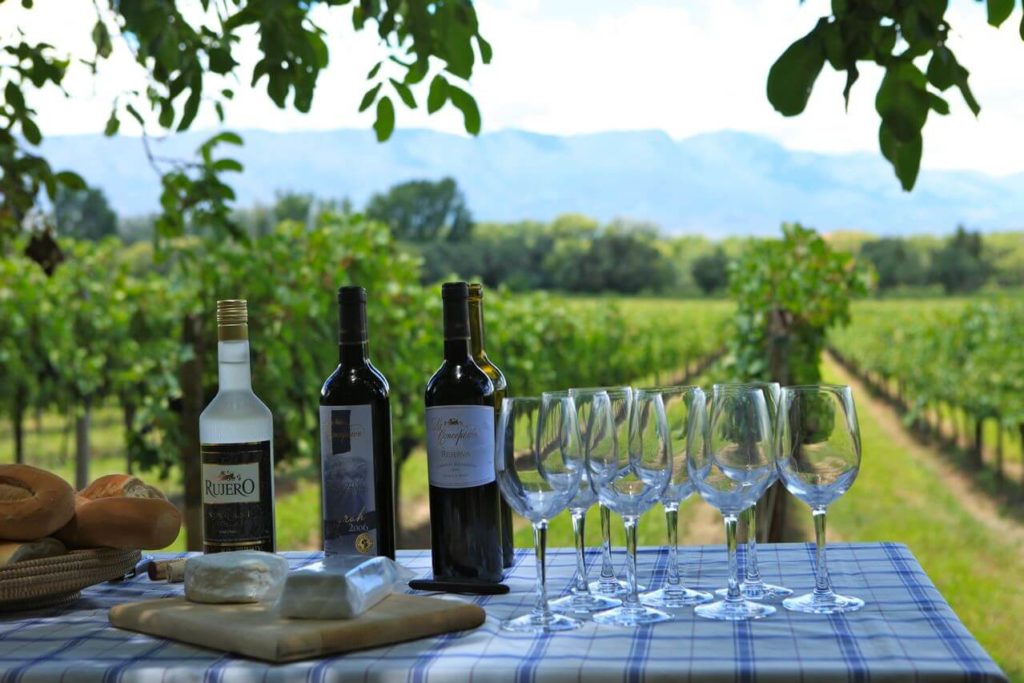
When we think of Morocco, the first drink that comes to mind is mint tea. As a Muslim country, we do not associate it with wine, yet it is the largest producer in Africa after South Africa and the main exporter to the Arab world, as well as the leader in consumption.
The secret of its wine lies in its proximity to the Atlantic, which provides a perfect breeze for the grapes and is reflected in the quality of the wines. The fact that the French instilled the culture of wine during the Protectorate, from 1912 to 1956, also contributed to the fact that Morocco has some of the best wineries on the African continent.
Since Antiquity
But Morocco’s relationship with wine is not a recent one. The first approach to wine culture came from the Phoenicians, although later it was the Romans who established it, as evidenced by the fact that a mosaic depicting Bacchus, the god of wine, has been found in the ruins of Volubilis, near Meknes.
Between the 15th and 18th centuries, the Portuguese became interested in growing wine, and in the early 20th century, with the arrival of French, Spanish and Italian winemakers, vineyards settled in Casablanca, coinciding with the wine crisis in Europe.
Until 1930, vines also settled around Marrakech, and European farmers founded the first wineries. In view of the business, Morocco invested to increase the area of vineyards, and large wineries were built, such as La Hacienda des Cigognes near Rabat.

French influence
In the middle of the last century, and despite Morocco’s proximity to Spain and Portugal, France was the country with the greatest influence on Moroccan wine culture. Large-scale production came about thanks to the French, who brought with them their knowledge and know-how. At this time, some 55,000 hectares were dedicated to vines in Morocco. The first cooperative wineries began to emerge, and people like Brahim Zniber and Guy Baconnet gave a taste for quality Morocco wine a boost.
However, in the following years, a large part of the vineyards was uprooted to plant other crops, so in the 1990s there were only 14,000 hectares in Morocco to produce wine. It took the arrival of King Hassan II to restore production, and he made a definitive commitment to Morocco’s wine-growing potential. Production began to improve and foreign investment arrived. And Moroccan wine entered a golden age, to the point that some of the best-selling wines in France at the beginning of the 21st century were produced on Moroccan soil.
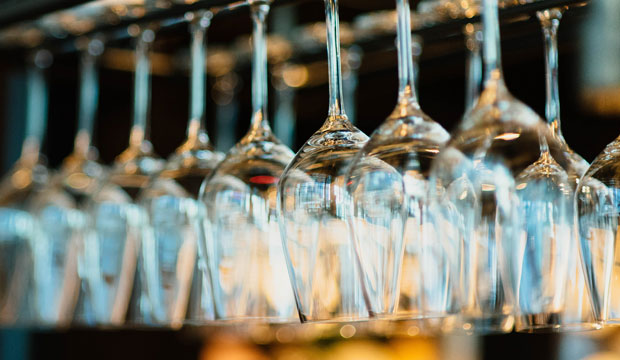
Moroccan wine in figures
Red, white, and rosé wines are produced in Morocco, and although beer is more popular as a spirits drink, bottles of wine are increasingly found on local tables. Along with Kuwait, Saudi Arabia, Jordan, and Libya, Morocco is one of the Arab countries with the highest alcohol consumption. Specifically, Moroccans consume 131 million liters of alcohol per year, of which 38 million liters is wine.
Wine is present in restaurants, bars, nightclubs, hotels, and shopping centers in major tourist cities such as Marrakech and Rabat. There are 49,000 hectares of vineyards in the country, of which 8,000 hectares are used for wine production, with 35 million bottles produced annually. Of these, only 5 million are for export, mainly to France, but also to the Netherlands, Belgium, Great Britain, the USA and Japan, and incipiently to China.
Some 77% of production is red wine, while white wine accounts for 6.6% and rosé and grey wine for 16.4%. The latter is an indigenous variety of rosé, grown from Chardonnay grapes.
Morocco has 14 guaranteed designations of origin and one appellation d’origine contrôlée, granted in 1998, “Les Coteaux de l’Atlas”. The grapes used in production are mainly Cinsault, Carignan and Grenache. Some of the best-selling wines are Coteaux de l’Atlas, Castel Boulaouane and Odyssey.
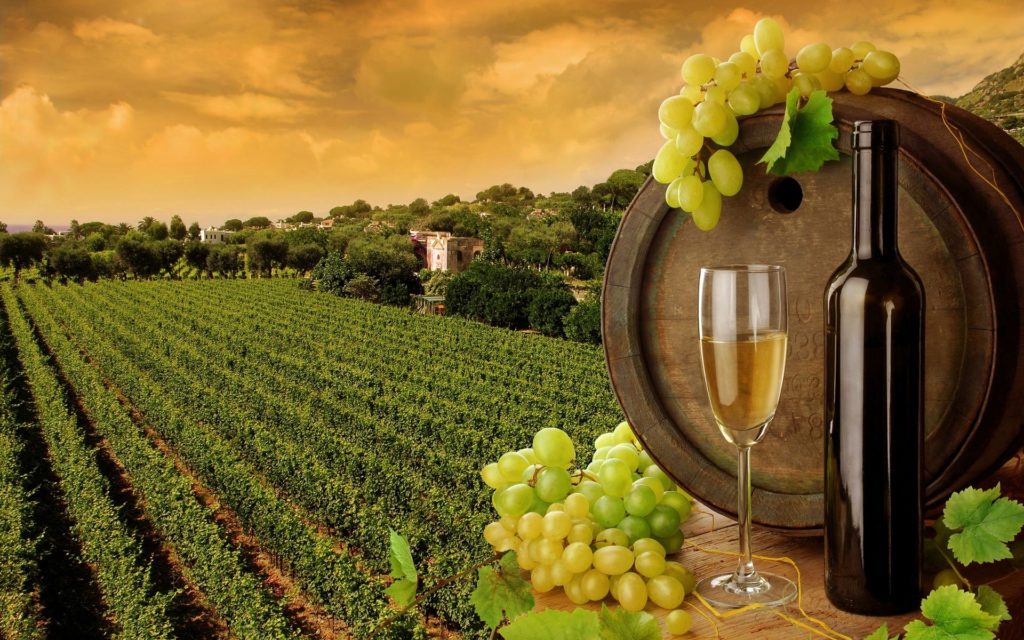
Areas of excellent production
The sector employs around 20,000 people and has several production areas, which have produced excellent harvests since the introduction of automatic irrigation. Thus, Casablanca stands out for its red wine, while Rabat produces mainly light reds. And although there are also coastal vineyards in Casablanca, if we have to choose an area of excellence, it is perhaps Meknès and Fez, where 60% of Moroccan wines are produced.
In the Atlas Mountains, vines can grow at altitudes of up to 1,200 meters. It is this special climate, combined with a harvest that is sometimes carried out by hand, selecting the grapes on the vine itself, that gives quality and fame to the white wines, with high acidity, and elegant reds that have a great place in the international trade.
In the first half of the last century, Moroccan bulk wines were exported to France to give color, body, and sugar to wines from the Burgundy area, where the grapes lacked hours of sunshine. Today, they are highly appreciated in France, especially the red and rosé wines that accompany traditional Arab dishes.
Experts say that Moroccan reds are full-bodied, well-structured, and well-made, while the whites keep improving vintage after vintage. These wines are praised by the world’s best sommeliers and have found an increasingly loyal following in Morocco.
Wine has been cultivated in Morocco since ancient times, but its fame has gradually been growing, thanks to improved winemaking techniques and the efforts of European, mainly French, winemakers. Increasingly accepted by the Moroccan population and with more and more international interest, Moroccan wines have been recognized as some of the best wines in the world, making them the best excuse for a toast.

